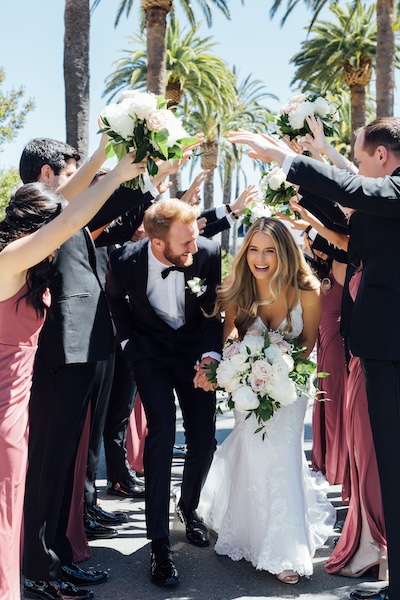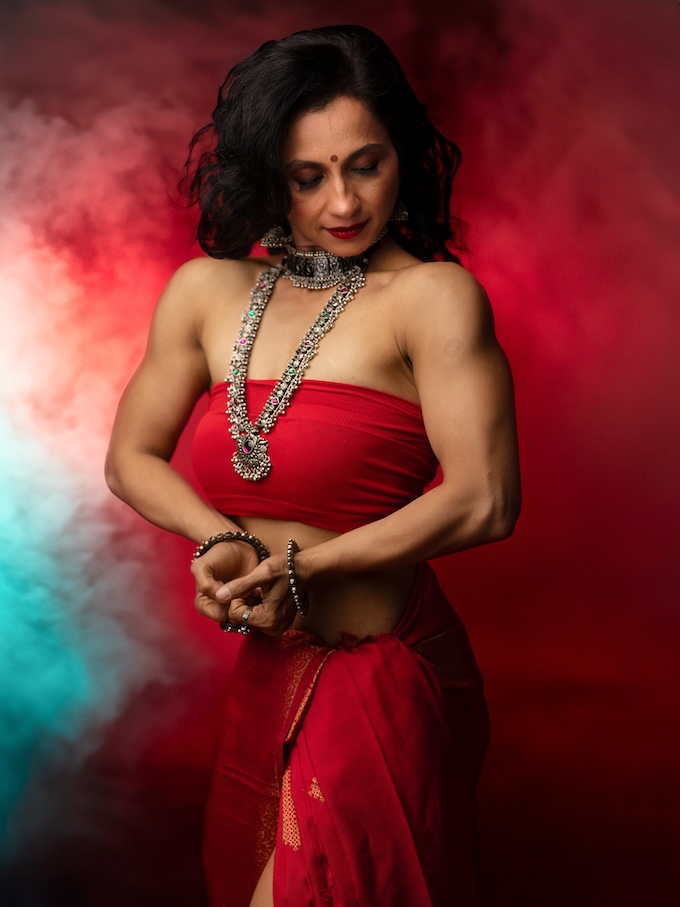Business + Marketing
When it comes to marketing their portfolios to try and land new clients, photographers have employed tactics like sending out promo books to agencies or paying for advertising on Google. I’ve tried these out several times over the years with zero success, so I decided to go another route: creating personal photo projects (also known as unpaid work).
HOW DO I CREATE AND SHARE PERSONAL PHOTO PROJECTS?
At least once a week, I do a creative photo shoot for myself. If I can coordinate the timing, I might have a friend or model come by my studio—otherwise I’ll shoot a still life. Sometimes I have an idea or a technique that I want to try out. Other times I just start shooting and let the session guide the creative. Once a personal photo project is over, I’ll post my favorite images on my blog (yes, people still blog) and then I’ll throw a couple teaser images on Instagram and push people to head over to my blog to see the rest.
[Read: Creative Lighting Techniques for Portrait Photographers]
At the end of the month, I send out a Mailchimp newsletter to around a thousand contacts (which I’ve compiled from years of client emails) that include a few of the images from my personal photo projects, linked to the related blog posts. The newsletter has reminded old clients that I still exist and has led to new gigs and assignments. The increased traffic to my blog (which is also on my Squarespace website) has boosted my SEO significantly, leading to new clients. And the vast library of personal work that I’ve accumulated has led to licensing opportunities with clients like Apple, and job bookings with clients like Sony Music and IBM.
WHAT KIND OF PERSONAL PHOTO PROJECTS SHOULD YOU CREATE?
Let me back up a bit. When it comes to growing your portfolio or building up clientele, it’s extremely important to shoot the type of work that reflects the type of work that you want to bring in. If you want to shoot editorial portraits, you should practice shooting a range of different types of people in a range of different poses while using a range of different camera techniques and lighting setups. If you want to shoot product work, buy an item like a cool perfume bottle, shoot it in every possible way that you can think of, return the bottle, buy a different one and do it some more. The goal is to show a potential client what you’re capable of creating.
[Read: Making Portraits Pop—Jen Huang’s Photography Fundamentals]
Let’s say you’re already busy shooting paid work but not in the style of work that you ultimately want to be working in. Continue to take the gigs so you can pay your bills, but start making time to shoot the kind of work that you eventually want to be doing. The more you do this personal work and share it on your blog or on social media, the more people (some of whom are potential clients) will see what you are doing and will start commissioning you to create similar work for them. More and more, I get asked to “do what I do” by a photo editor, art director or client. They might see an image that I recently shared, which they added to a mood board and eventually pitched as a possible shoot direction to one of their clients. Creative work begets more creative work, just as boring work begets more boring work. Choose your own adventure.
HOW DO PERSONAL PHOTO PROJECTS BECOME PAID WORK?
But maybe you already know all of this. Not only that, maybe you’ve already figured out the kind of photography you want to do and acquired all the gear you need to do it. You’re even consistently creating eye-catching images in your own signature style. Now comes the especially hard part: getting the gigs.
I used to think that if I worked long enough and hard enough to innovate in my craft that gigs would automatically start rolling in for me. While this may happen for some folks, sadly it didn’t for me. I simply lived in the wrong market (the Midwest) for what I wanted to be doing (shooting editorials of actors and musicians). To really catch the eye of editors and art directors that were commissioning this type of work, I needed to be living in New York or Los Angeles. Because my family all lives in Columbus, Ohio, and couldn’t or wouldn’t move, relocating was not an option for me.
[Read: Why the Photography Slow Season is Absolutely Nothing to Dread]
Since I couldn’t go to the clients, I focused on who was regularly coming to me—namely, touring musicians. I began to Google the email addresses of band managers, tour managers and anyone I could find that was associated with a musician that I liked. I’d even try messaging them through social. Most of the time I never received a response, but sometimes I got lucky. The more popular the band, the less likely I was to get a response. I found that the sweet spot was reaching out to an emerging artist, someone who was small enough to respond to my inquiry but large enough that a publication would be interested in them.
Once I did get in touch with an artist, I would offer to shoot with them after their sound check but before the show. I told them that all I needed was 10 to 15 minutes backstage and that they could use my images on social media as long as they credited me. If they later decided to license the photos for merch or publication, we could work out a rate.
Since photo editors and clients wouldn’t hire me to do stylized work until I had stylized work in my portfolio, I began by creating images of local models and friends. After I had a handful of great images in my book and I’d refined my visual style, this increased the odds that I’d receive a response to my email.
A prime example of this was when I got the green light to shoot Buzzo, the lead singer of The Melvins, before one of their Columbus shows.

I’d been a fan of the band for years and was intimidated to take Buzzo’s portrait. I came to the shoot with one idea and wanted to get in and get out as fast as I could so as not to impose on his alone time before the show. When I arrived at the venue, I was directed to the modest green room. As you can see above, it was less a room and more of a space behind a curtain just large enough for a couch. Fortunately, this was all I needed to execute the shot I had in mind.
Buzzo is known for his iconic hair, which I wanted to feature in my reimagining of the key art for the cover of the movie Nebraska by director Alexander Payne. To match the lighting, I simply placed a flash on the back of the couch, positioned it behind Buzzo and aimed back toward the camera. This created a wrapping rim light, epically highlighting his hair in the exact style of the movie poster.

Fast forward a few months: I was driving up to Cleveland to photograph the industrial hardcore duo Youth Code, before they opened for Skinny Puppy. Once again, I was shooting in a rather modest backstage area, though this time I had enough space for two lights.

I created a dramatic image by using two speed lights with DIY snoots. The band loved it so much that they decided to use it in their album.
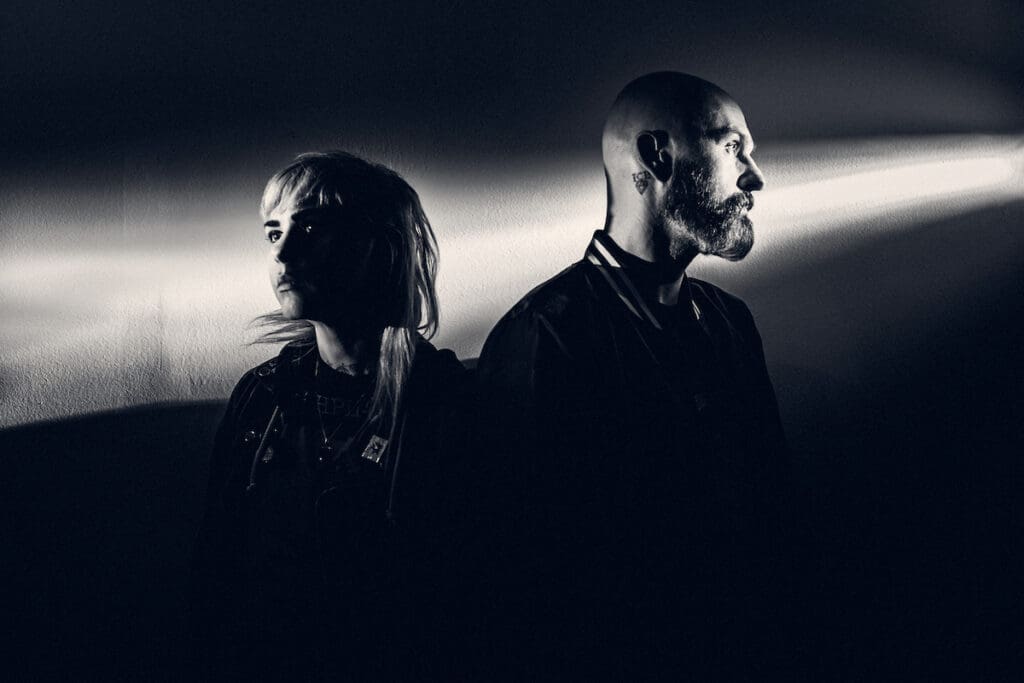
A year later, they released that album and went on tour to promote it, along with several other bands. A fellow musician on the road happened to be the creative director of Revolver magazine, who loved the shots and decided to reach out to me. He fell in love with the portrait I made of Buzzo and wanted to license the photo for the magazine, which meant that my personal work literally paid off. I also now had a direct connection to the editorial market I had been trying to tap into, and I began pitching him ideas for future shoots.
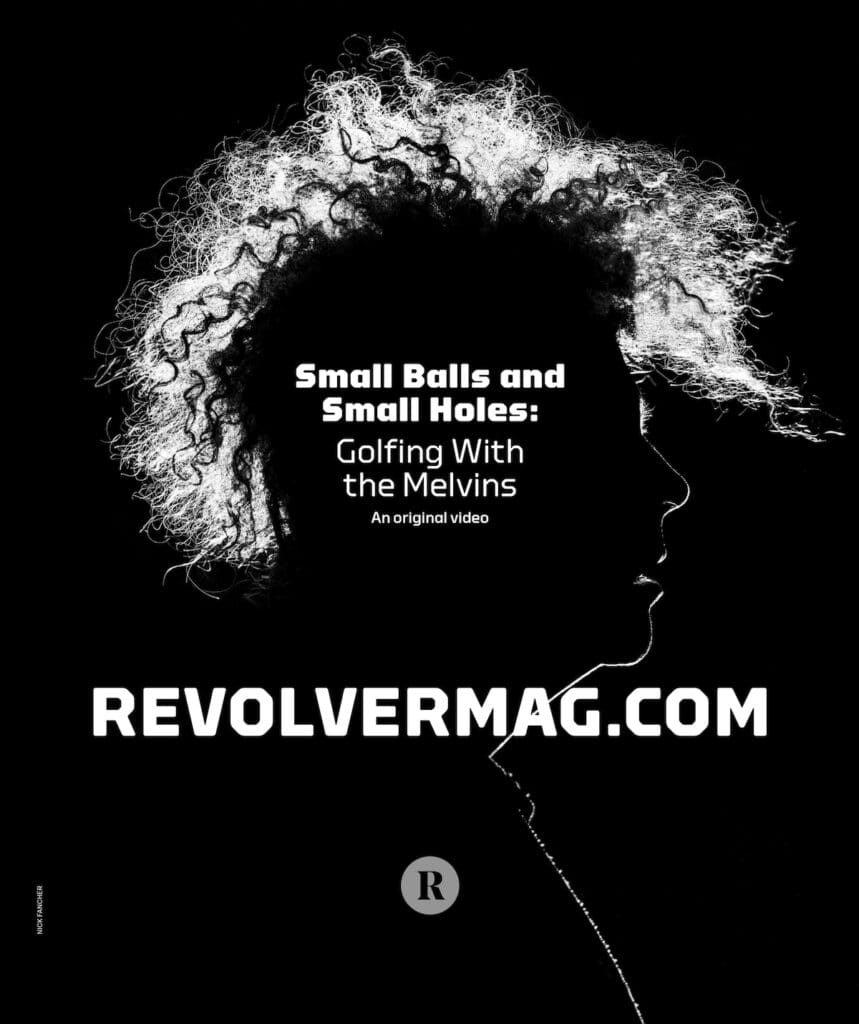
After shooting a well-received story for Revolver in 2017, the photo editor pitched me as the photographer for a major story they were doing with the band Ghost in spring of 2018. The anonymous masked singer was about to release a new album under their new stage persona, Cardinal Copia. The editor mentioned that other magazines would likely be shooting Copia in dark, ominous scenes—typical for the satanically-inspired metal band—and asked that I take a more vibrant, colorful approach to the session to really stand out. When I landed in Los Angeles, I met up with my local assistant and friend Kristin Cofer (a fantastic photographer) at a West Hollywood studio and set up a range of lighting cues that mimicked those I did for friends and models in my basement studio. Once the Cardinal walked out, we knocked out four cover options in just under an hour.
Keep in mind that Revolver is based in New York, which meant that the editor had literally no oversight on how I was interpreting his shoot direction. That amount of trust is extremely rare. The freedom I was given was a result of me owning a specific style and consistently creating work for myself. They didn’t need to micromanage me since they simply wanted me to “do what I do.” Revolver loved each shot so much that they decided to run four cover variants for that issue. Ghost’s management loved them so much that they licensed one of the photos to use in a Grammy advertisement.
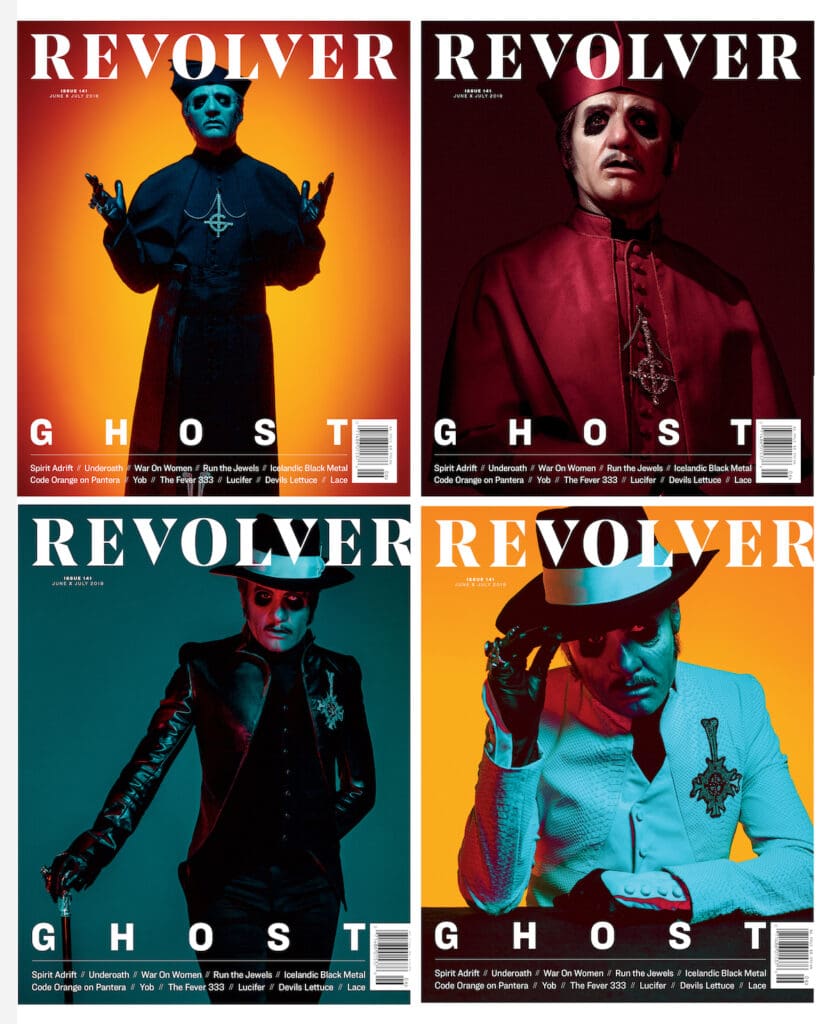
Aside from my personal work landing me new shoots, sometimes the images themselves have led to licensing opportunities. Here you can see a photo of a rose that I took on a particularly slow day at my studio:
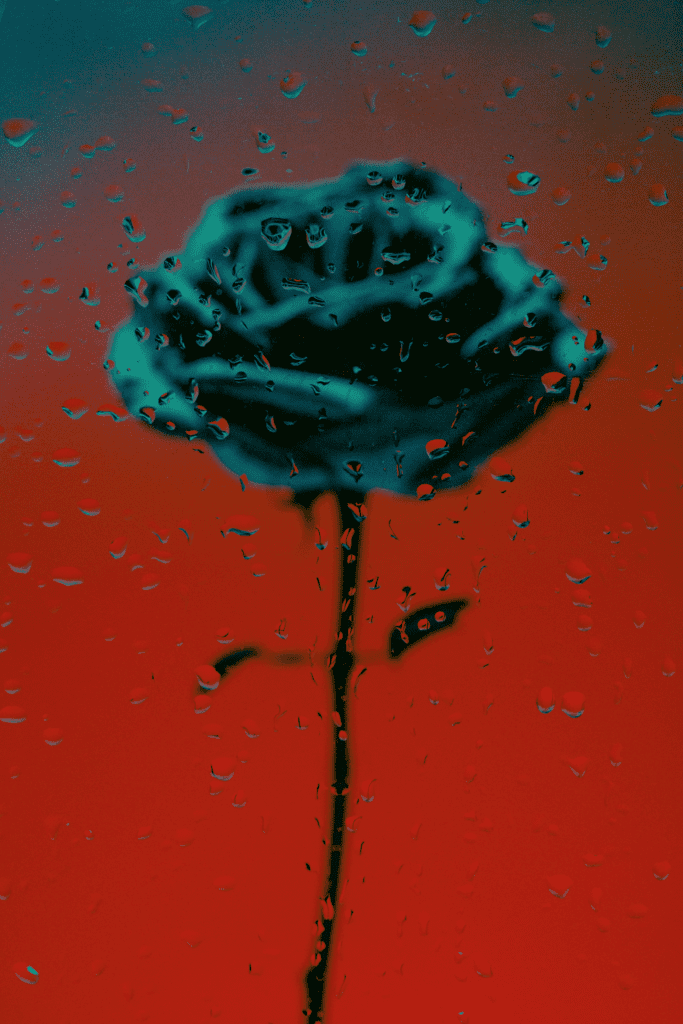
I had taken a walk down to the flower shop at the end of the block and bought a few stems that looked especially inviting. When I got back to my studio, I photographed them in a half dozen different ways, just exploring light and composition.
When I finally got a few images that I liked, I shared them on my Instagram. A few weeks later, a creative director at Apple emailed me and asked to license the photo for iTunes.

Another example: I did a shoot in 2015 with a local model that I frequently collaborated with. I shared the photo online and for whatever reason, the image went viral on Pinterest. It circulated people’s pin boards for years.
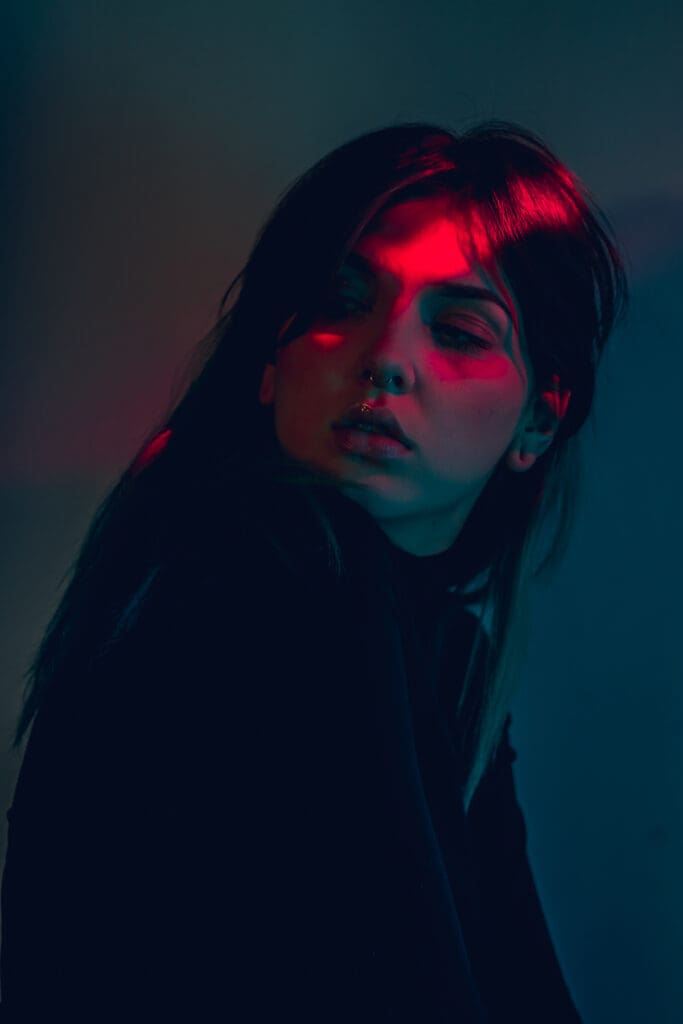
Other artists started creating their own interpretations and would send me their drawing or digital painting of the photo. One person added a ring of light around the model’s head in Photoshop, which caught the eye of the band Odesza. They reached out about licensing the photo to use on the cover of an upcoming album. Since that ring of light wasn’t in the photo that I had shot years ago, they had to have their creative team recreate it.

The point I’m trying to make is that everyone’s journey and job market and career goals are unique to them, and all of them are valid. Don’t fall for the trick of thinking there is a certain path you must take in order to succeed as a photographer.
The main thing to keep in mind (which could mean the difference between failure and success) is to never stop shooting for yourself. If the work isn’t there, shoot to pass the time and stay creative. At the very least, you’re sharpening your skills and doing something you love. On the other hand, personal work can get you published or make you money through image licensing or client bookings.
There’s an expression that goes something like, “It’s easier to steer a moving car than a parked one.” Inspiration rarely hits you while you’re just sitting around, so get up and get moving.
Nick Fancher is a portrait, editorial, music and commercial photographer, an author and an educator. He last wrote about why he decided to delete all of his social media accounts, and how he started new ones on his own terms. Keep up to date with his most recent work at nickfancher.com/blog/.



